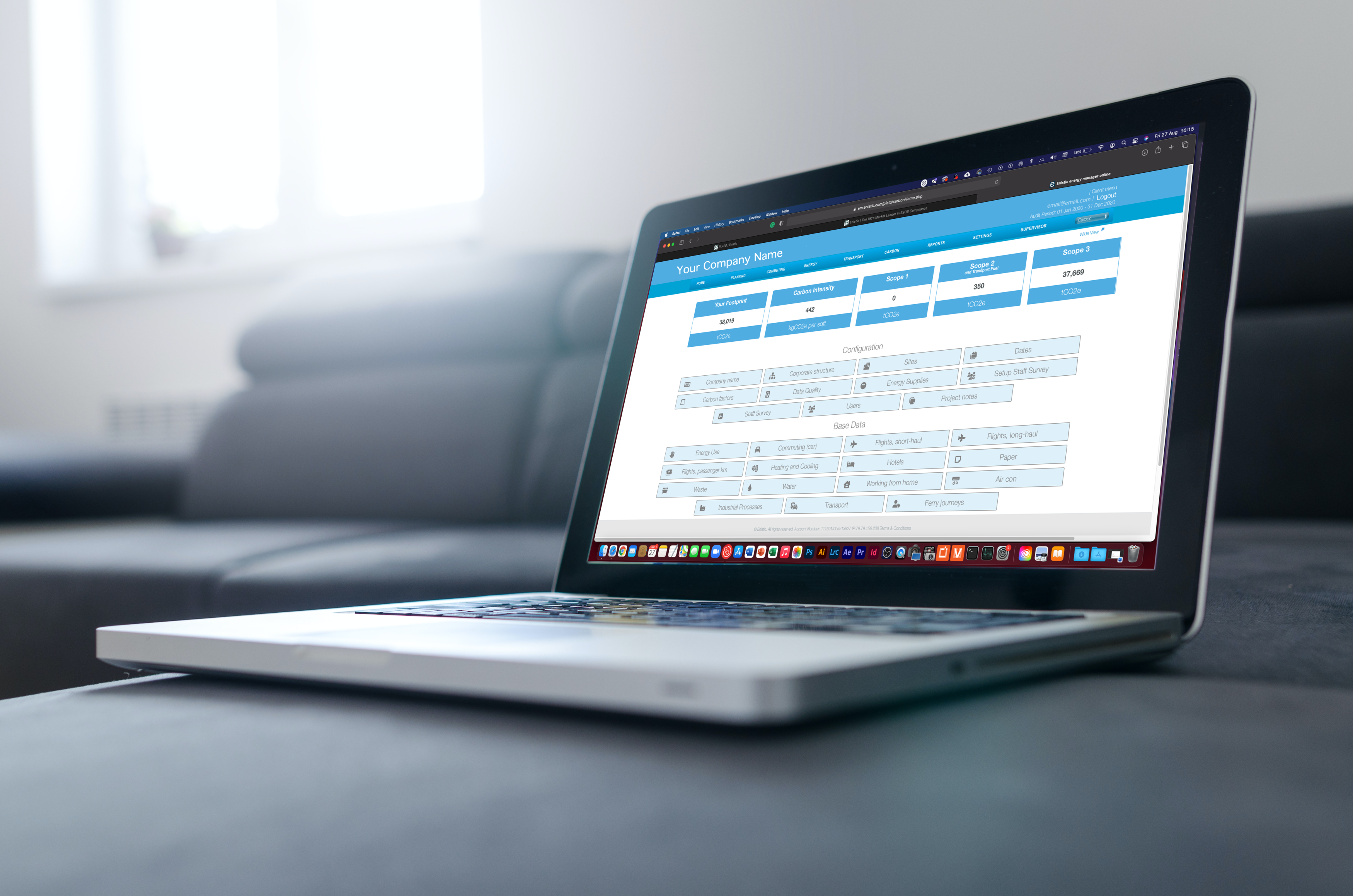What is the Procurement Policy Notice 06/21 (PPN 06/21) and how does the standard apply to your business?
PPN 06/21 is a standard from the UK Government, taking account of carbon reduction plans in the procurement of major government contracts in excess of £5 million. This was issued by the Cabinet Office on the 30th september 2021 as a requirement for any business dealing with major contracts. There are however some exceptions. Not all contracts will require you to have PPN 062/1 compliance, although it would certainly be surprising if this was the case.
We’d therefore recommend that every business carefully considers every contract that they’re dealing with, in line with the government criteria for PPN 06/21.
Generally speaking, it’s a pass/fail sort of standard. This doesn’t necessarily apply to every single industry – for instance we’ve seen the NHS adopt the standard in their own way. You can find out more about this here. But in general, compliance is pretty straightforward. If you don’t comply with any of the provisions, you fail. There isn’t a gradient, but rather a checklist to ensure you’ve provided the correct data in order to pass.
What happens if you don’t comply?
If you fail to comply, you can expect to either be scored severely heavily against any renewal contract, or indeed blocked from being awarded the contract.
What does the standard consist of?
So the standard is essentially a carbon reduction plan template. You get a fixed format of a report called a carbon reduction plan (CRP), with various sections that detail your carbon use. You’re required to report what the carbon emissions are in various categories, what you do about it, what your targets are, etc. The CRP is an annual requirement and It must be published on your website, following a set format, with all sections of the requirement fulfilled. So for example, one of the requirements is reporting on upstream deliveries. Even if the data is minuscule, you are still required to report them. The CRP must also include your plans to get to Net Zero by 2050. You have to describe the procedures and the mechanisms you’re going to apply to the contract you’re bidding for and more generally, to reach that goal. Your report must be signed off and it’s normally done by a senior board director.

What do I need to include in the Carbon Reduction Plan?
Let’s go into the components of the carbon reduction plan in a little bit more detail. So there are 14 major components of the plan with a set format that doesn’t really change. This means that they can take a CRP from Supplier A during contract bidding, as well as B and C and D, pulling these out into a spreadsheet with everybody using the same kind of fields, descriptions and methodology.
One necessity is describing your fuel. Within this, you must explain your electricity use, gas use and any other fuels you may have such as LPG or diesel. So if you’ve got a diesel heater, an oil burner or something similar, you need to include this.
here are also five travel components to consider. First off, it’s all of the fuel you put in your company vehicles. Second is all the carbon emissions from your staff mileage. So if staff attend a meeting and go from A to B, you must write that down and quantify the carbon emissions from this journey. You’ve also got your other forms of business travel which includes; bus, train, plane etc. One of our clients has got a private plane, so you can imagine that’s going to knock it straight out of the park. But all the business travel elements need to go in there. Again, you need to take the business travel and quantify that into carbon terms.
In regards to commuting, you need to quantify how much carbon is emitted in staff commuting to and from your place of work. We generally include working from home (WFH) since we consider it an important component but that’s completely optional. We do have a platform that handles it all, with a survey built in that can be issued to staff to fill in. The platform can easily work everything out that you need from the staff surveys.
here certainly are some tricky components within the standard. The first two are your upstream and downstream deliveries. Your upstream deliveries is the carbon associated with deliveries that you take in , i.e from your suppliers, and the carbon emitted when they deliver stuff to you or your various offices. For this, you will need to note whether the delivery came via truck or van, how far it travelled, whether it’s petrol, diesel, etc, etc. Again, that’s all built into our software platform, which allows you to put in all the numbers and out comes the result.
Next is downstream deliveries. So this is the deliveries you make out to your clients. Again, you should be tracking this and it’s generally easier because you have better records of this in our experience. So it’s how many times you send out stuff by UPS, by truck, by van etc. Generally, this can be quite complex – we’d advise you to get somebody who’s done it before and ask them how to go about doing it in the most efficient way.
The next category is waste, which is another difficult category to process. But broadly, we’re speaking about how much waste you generate, what type of waste it is, where it’s going (recycling or landfill) etc. At times this can take days to process, which is a total nightmare. But again, it’s built into the platform, all you need to do is put the data in in the correct fashion.
The other components you need to put in include the need to declare a base year. Essentially, you need to say that we’re going to reduce our emissions by X over period Y, compared to a base year. Nice and easy. Everybody chooses either the current year or the previous year. But be careful of COVID. Let’s say your operations have been reduced by the pandemic and you go out to the world and say we’re going to reduce our emissions by 10%, over a two year period – if you’re starting from a really low base because of COVID, you’re going to struggle. Because of this, we would not recommend choosing a COVID year, but instead choose either the year before COVID. The higher you can get that base year, the easier it will be for you to show reductions
You must also declare a target of becoming Net Zero by 2050, which is a requirement of the standard. But you must also set an interim target, most of our clients would use something like a 40%, or 50% reduction in emissions by 2030. That’s very typical. Some people go further and introduce targets for 2040. That’s your call, but you need one target, then you need a description of everything you’re going to do to run the contracts with the government in an environmentally friendly manner.
The last component you need in there is your progress shown in a charted way. This chart can show your plan and where you currently are this year. So you’ve got a chart saying this is our plan down here. This is where we are this year. Seeing as this is an annual requirement, you can plot your progress down and you can look at a reduction.
What else can you include?
If you want to go above and beyond the requirements, you can also look at the carbon emissions of your supply chain, as well as supplier policies, handbooks, guidelines, etc. We’d estimate that about 30% of our clients choose to include the supply chain as an appendix to the standard document. So it’s not included in the main document, but it’s in the appendix which allows the government to compare A to B to C to D. By including this, you don’t receive any extra points, but you are making it clear that you care. If you don’t include the supply chain, you’re only looking at half the story.
Tricks and Tips
You can also expect some elements of the supply chain to start becoming legal requirements. Right now, this is of course only a rumour, we won’t know until it actually happens. But you’d definitely be working in the right direction if you include supply chain measures and offsetting. Now, that’s quite a lot, isn’t it?
Now for some tricks and tips. First off, the biggest, biggest, biggest thing is to get some help. If you’ve been put in charge of the report, ask for help from your colleagues! For instance, when it comes to typing in your flight data, perhaps speak to someone in your travel department and see if they would mind taking charge of this component. If you get some of these components wrong, you will not pass the PPN 06/21 requirement, so it’s imperative that you seek help! This could be internal or external, so long as the standard is filled out correctly and precisely.
Second tip. If you want to do this on Excel, good luck and we hope it goes really well! It is certainly possible, however, there’s a lot of data to process, accumulating year on year. Especially if you’ve got multiple sites, you’re talking about huge amounts of data. So imagine you’ve got 12 sites; each site has electricity, gas, waste, upstream, downstream etc. You’re talking about a truckload of data per site, and then you’ve got 12 of those – pretty soon you’d start drowning in data. It’s therefore worthwhile to look at a software platform. Of course, we’re going to be biassed as we’ve got our own.
Last tip is to make sure you leave enough time for this. The fastest I’ve ever seen it done is about seven weeks. This is not because the report is overly complex, it’s just that you need to get the data right. If you’ve got a lot of data to collect and you need to enter it into some sort of software platform, then that takes time. As well as this, putting together your CRP can also take a little time. A more realistic timeframe for us is probably around 12 to 15 weeks elapsed. We can go faster if we get the data quickly, but that’s sort of a good rule of thumb.
So there you go. Well done UK Government for coming up with this in the first place. It’s a good step forward. It marries up with other pieces of legislation, ie SECR, TCFD, ESG, lots and lots of acronyms. Another great thing about this standard is that it brings carbon into the agenda of boardrooms, which is exactly what we need if we’re going to try and reduce the carbon footprint of the UK and therefore of the planet.
If you’ve got any questions or if you need any help, get in contact, we’re happy to help!




